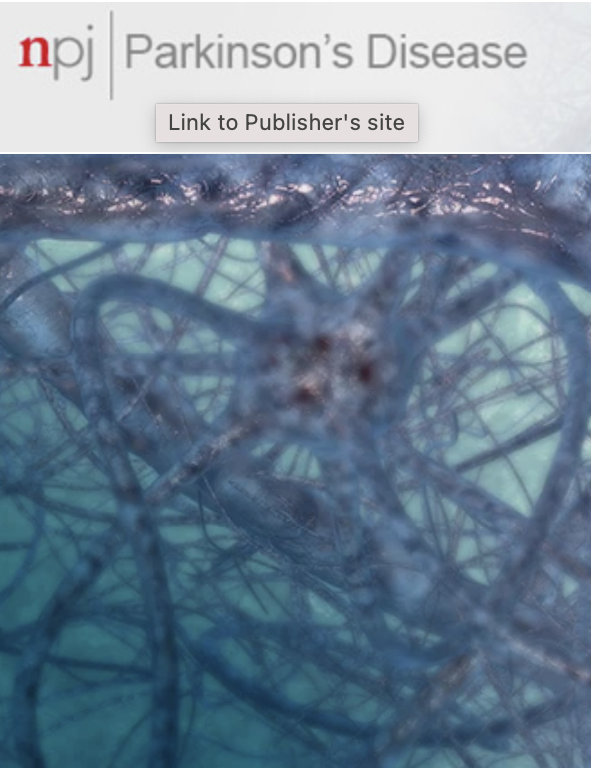Genetic risk and plasma biomarkers of dementia with Lewy bodies in a Chinese population.
IF 6.7
1区 医学
Q1 NEUROSCIENCES
引用次数: 0
Abstract
Genetic investigations and associations with plasma biomarkers of dementia with Lewy bodies (DLB) in East Asian populations are lacking. The aim of our study is to identify candidate pathogenic variants and assess the diagnostic performance of plasma biomarkers among DLB patients in the Chinese population. This cohort included 151 DLB patients and 2010 controls, all of whom underwent whole genome sequencing. Plasma glial fibrillary acidic protein (GFAP), α-synuclein(αSyn), neurofilament light (NfL), and phosphorylated tau 217 (p-tau217) were detected in a subgroup. As a result, the APOE ε4 allele significantly increased DLB risk (p = 1.84E-11), while rare missense variants of USP13 gene were first found to be suggestively associated with DLB risk (p = 1.31E-5). Higher levels of plasma GFAP, αSyn, NfL, and p-tau217 were detected in DLB patients compared to controls (p < 0.001), which combined with polygenic risk scores (PRS) achieving an AUC of 0.927 for DLB diagnosis. Besides, significant correlations were observed between PRS of DLB and age at onset, the cumulative incidence rate, as well as plasma GFAP levels. In conclusion, this is the first study to simultaneously investigate the genetics and plasma biomarkers of DLB, highlighting the discriminative ability for DLB using PRS and plasma biomarker assay.中国人群路易体痴呆的遗传风险和血浆生物标志物。
东亚人群中路易体痴呆(DLB)的遗传调查及其与血浆生物标志物的关联尚缺乏。本研究的目的是鉴定候选致病变异,并评估血浆生物标志物在中国人群DLB患者中的诊断性能。该队列包括151名DLB患者和2010名对照组,所有患者均进行了全基因组测序。在一个亚组中检测血浆胶质纤维酸性蛋白(GFAP)、α-突触核蛋白(αSyn)、神经丝光(NfL)和磷酸化tau217 (p-tau217)。结果表明,APOE ε4等位基因显著增加DLB风险(p = 1.84E-11),而USP13基因的罕见错义变异首次被发现与DLB风险相关(p = 1.31E-5)。与对照组相比,DLB患者血浆GFAP、αSyn、NfL和p-tau217水平较高(p < 0.001),结合多基因风险评分(PRS),诊断DLB的AUC为0.927。此外,DLB的PRS与发病年龄、累计发病率、血浆GFAP水平有显著相关性。总之,本研究首次同时研究了DLB的遗传学和血浆生物标志物,突出了利用PRS和血浆生物标志物测定对DLB的鉴别能力。
本文章由计算机程序翻译,如有差异,请以英文原文为准。
求助全文
约1分钟内获得全文
求助全文
来源期刊

NPJ Parkinson's Disease
Medicine-Neurology (clinical)
CiteScore
9.80
自引率
5.70%
发文量
156
审稿时长
11 weeks
期刊介绍:
npj Parkinson's Disease is a comprehensive open access journal that covers a wide range of research areas related to Parkinson's disease. It publishes original studies in basic science, translational research, and clinical investigations. The journal is dedicated to advancing our understanding of Parkinson's disease by exploring various aspects such as anatomy, etiology, genetics, cellular and molecular physiology, neurophysiology, epidemiology, and therapeutic development. By providing free and immediate access to the scientific and Parkinson's disease community, npj Parkinson's Disease promotes collaboration and knowledge sharing among researchers and healthcare professionals.
 求助内容:
求助内容: 应助结果提醒方式:
应助结果提醒方式:


